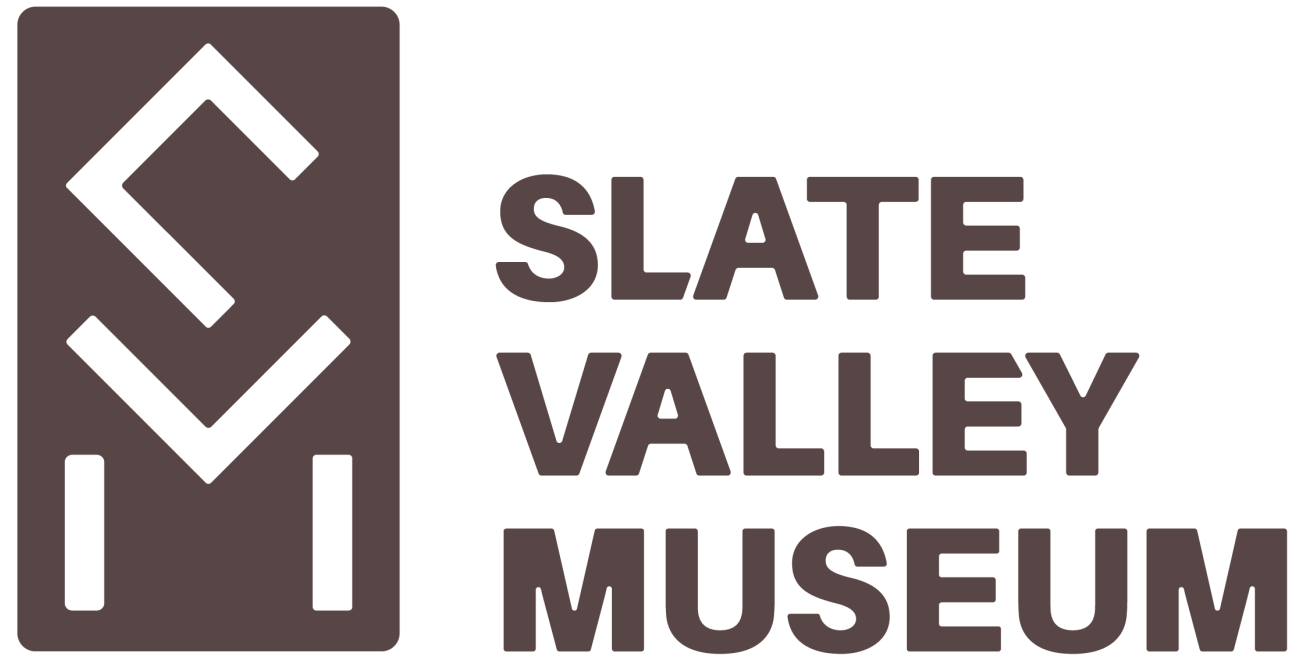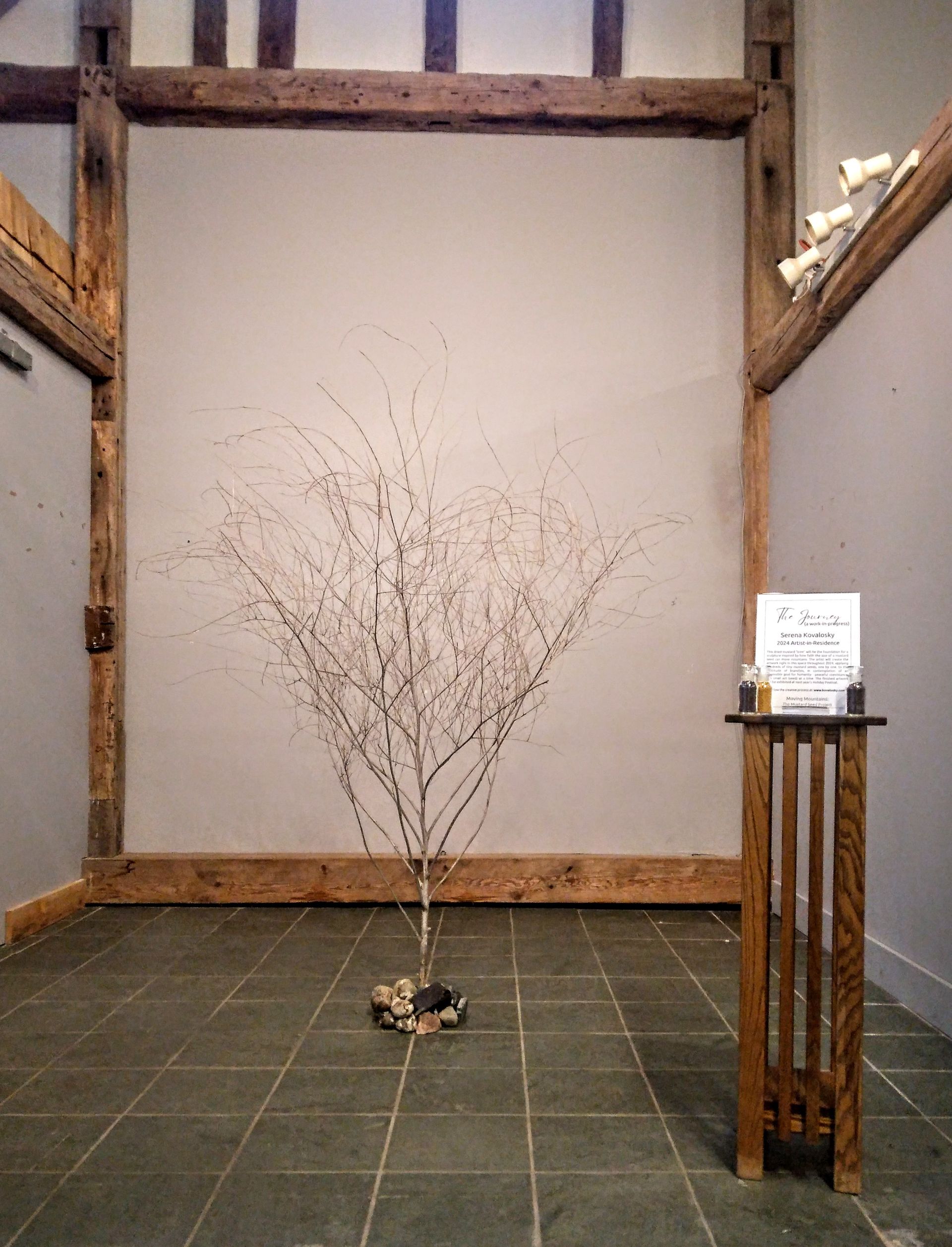2024 Featured Installation Event!
Moving Mountains: The Mustard Seed Project
With 2024 Artist-in-Residence Serena Kovalosky
For artist studio and program dates, please click here.
In a temporary studio at the Slate Valley Museum, artist Serena Kovalosky is inviting visitors to pull up a chair, have a chat, and immerse themselves in the creative process during her 2024 residency, which focuses on her sculptural project Moving Mountains: The Mustard Seed Project.
Kovalosky was inspired to create work from mustard seeds when a mustard plant grew in her yard last year during her eco-gardening project. She let the plant dry in her yard, and then carefully plucked it from the earth and moved it to her home. The artist was inspired by the historic symbolism of the mustard seed and became determined to create a unique sculptural piece using the plant and mustard seeds themselves.
Kovalosky also wanted to share the concept and process – the journey – with the public in a public space.
“Serena’s exploration of seeds, plants, and movement dovetailed naturally with our stories of Slate Valley immigrants,” explained the museum’s executive director, Sarah Kijowski. “We were happy to offer her a space to create her work here at the museum, and we believe that our audience will truly appreciate the opportunity to be a part of her process and the works that she guides and creates here.”
Now through October, Slate Valley Museum visitors will be welcomed to watch Kovalosky in her meticulous, six-month journey of placing tiny mustard seeds from around the world, one by one, on the branches of a foraged mustard "tree" as a contemplative exercise in how “impossible” goals are achieved – one tiny step (seed) at a time.
While visiting, guests will learn about the inspiration behind Kovalosky’s concept while embarking on their own seed journey by stringing dried vegetables and seeds. Their work will form a community-created art installation that explores perspectives of cultural identity through plants and food inspired by the museum’s ongoing exhibition, The Dream and the Reality.
To view the artist's scheduled in-studio dates, please see her website here.
In addition to her time in the studio throughout the season, Kovalosky will also offer monthly “Seed Journey Sessions,” specific times and dates for visitors to visit and learn about a specific plant or seed.
“My project is intended to offer a relaxing environment and the opportunity for the public to participate in the co-creation of a community installation,” notes Kovalosky. “It’s one more lens they can use to explore and understand the stories in the museum’s ongoing exhibit, The Dream and the Reality, which really talks about the many immigrant groups that came to our region to work in and around the slate industry.”
Kovalosky will share surprising stories of how plant seeds and recipes traveled the world and influenced cultures as participants string dried vegetables with historical links to each of the ethnic groups that came to the Slate Valley quarries from the 1840s to the present. Glass seed beads in red, black, green, gray, and purple will also be strung for the installation as a visual representation of the Slate Valley as the “colored slate capital of the world.”
To make the program accessible for visitors young and old alike, Kovalosky and the museum will also provide larger pony beads, which are less challenging to string than some of the smaller and more intricate materials that will be used in the programs.
“Our goal is to make sure that anyone who wants to string beads can do so,” explained Museum Director Kijowski.
Serena Kovalosky’s culminating mustard “tree” sculpture and the community-created “Seed Journeys” installation will be exhibited at the Slate Valley Museum’s Holiday Festival in December with the 2024 theme of “Peace on Earth.”
Learn more about the project on the artist's website by clicking here.
Photo: Courtesy Serena Kovalosky.


